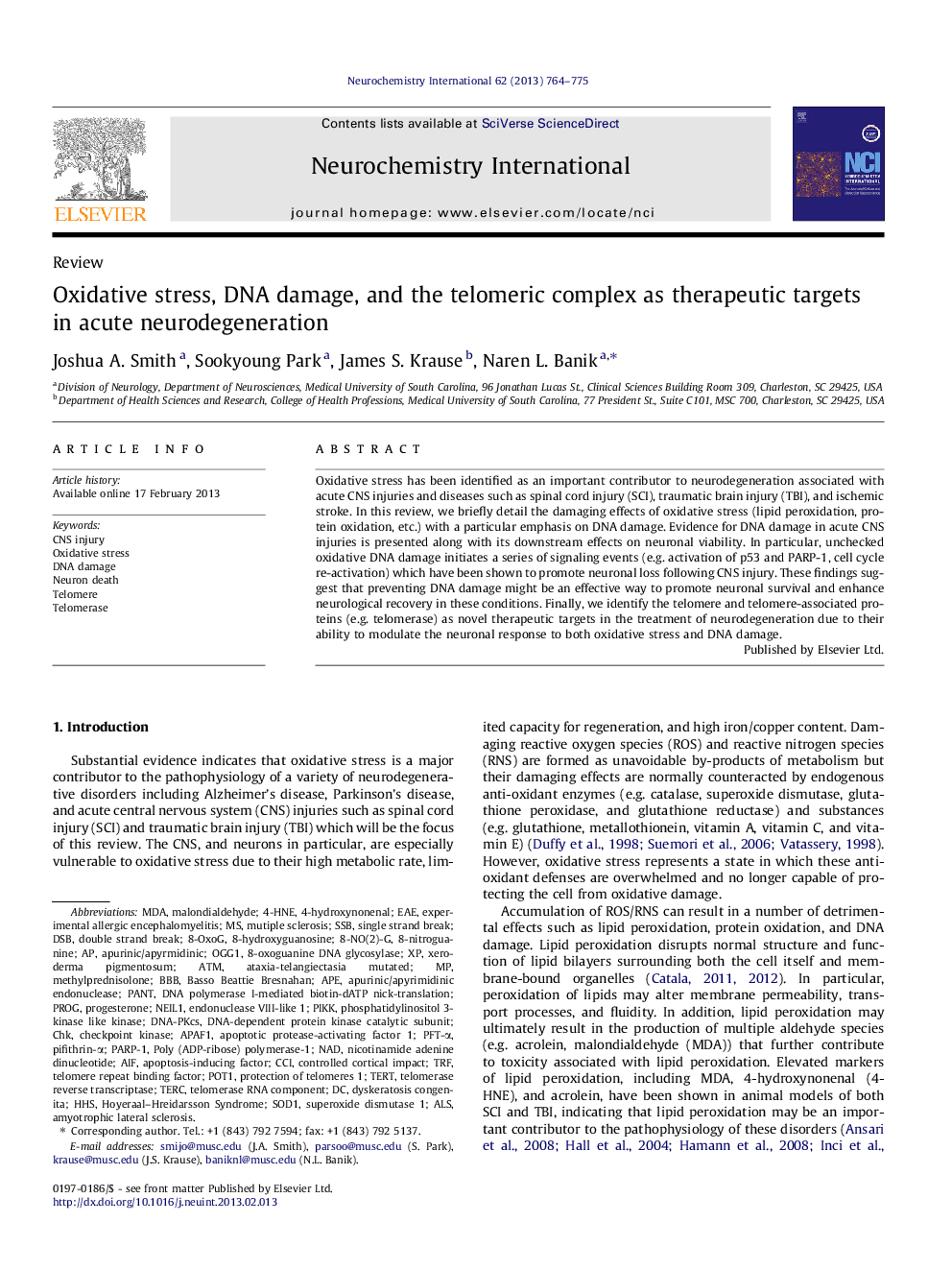| Article ID | Journal | Published Year | Pages | File Type |
|---|---|---|---|---|
| 10958100 | Neurochemistry International | 2013 | 12 Pages |
Abstract
⺠Oxidative stress is a major contributor to acute CNS injury and disease. ⺠A major consequence of excessive ROS/RNS production is DNA damage. ⺠Unrepaired DNA damage initiates signaling cascades for neuron death. ⺠The telomeric complex may modulate the pro-apoptotic response to DNA damage. ⺠DNA damage and telomerase remain strong candidates for therapy in CNS injury.
Keywords
APAF1CCISOD18-oxoGHHSPOT1SSBPROGOGG1DNA-PKcsDSB8-NitroguanineNEIL1TERCMDAPFT-αpifithrin-αTelomerase RNA componentendonuclease VIII-like 1EAEPARP-14-HNE4-hydroxynonenalTRFAPE8-oxoguanine DNA glycosylaseapurinic/apyrimidinic endonucleaseataxia-telangiectasia mutatedPIKKxeroderma pigmentosumCNS injuryDNA damageexperimental allergic encephalomyelitisAIFamyotrophic lateral sclerosischeckpoint kinaseALSTERTTelomerase reverse transcriptaseTelomereTelomeraseOxidative stressprotection of telomeres 1ATMBBBsuperoxide dismutase 1double strand breaksingle strand breakApoptotic protease-activating factor 1apoptosis-inducing factormalondialdehydeMethylprednisoloneNeuron deathNADnicotinamide adenine dinucleotide8-hydroxyguanosineDNA-dependent protein kinase catalytic subunitProgesteronepoly (ADP-ribose) polymerase-1Chkcontrolled cortical impactDyskeratosis congenita
Related Topics
Life Sciences
Biochemistry, Genetics and Molecular Biology
Cell Biology
Authors
Joshua A. Smith, Sookyoung Park, James S. Krause, Naren L. Banik,
